As a travel writer specializing in Japan, I know I can never match the sparse eloquence of haiku poet Matsuo Basho. Not only did he go there, do that, and write about it more succinctly than I ever could, he also experienced a Japan I can only dream about. Basho’s journey to the deep north in 1689 was epic, covering 1,491 miles in 155 days. Along the way he wrote poems and observations about the places he saw, combining them five years later in a book with the beautiful title Oku no Hosomichi (“The Narrow Road to the Deep North”).
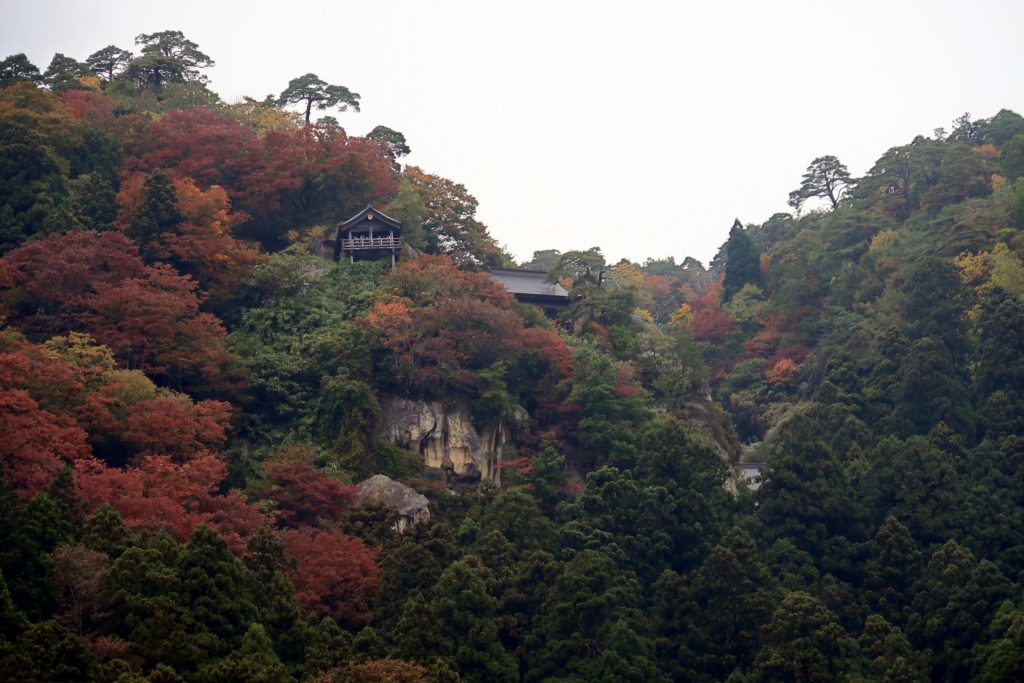
Basho is Japan’s foremost poet. Born a low-class samurai, as a boy he worked in the household of a samurai general, where he learned haiku. Later devoting himself entirely to composing haiku, he is credited with establishing its present form, with 17 syllables arranged in a structure of 5-7-5. Nature, the changing seasons, and heartfelt emotions are often themes, but because haiku is so brief, much is inferred, as in this one, considered one of Basho’s most famous: “An old pond/a frog jumps in/the sound of water.” Less is more in haiku. Politicians would have a rough time of it.
Where to learn about Basho’s journey to the Deep North
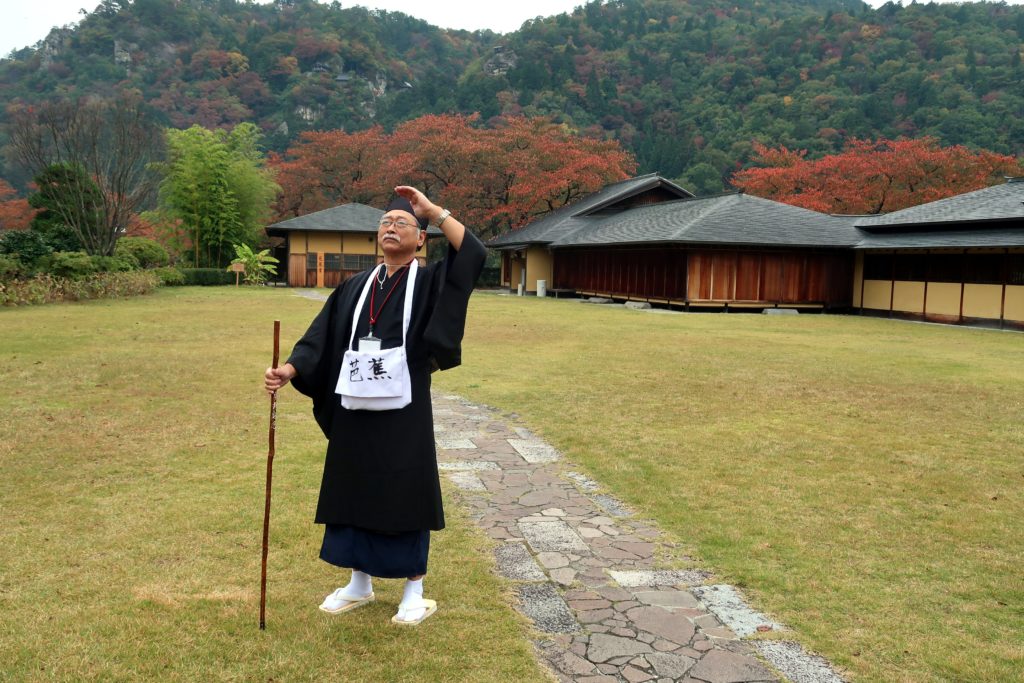
There are Basho museums, memorials, statues, and stones etched with his poems around the country, but one of the best museums devoted to Basho is undoubtedly the Yamadera Basho Memorial Museum, in the town of Yamadera. Located in the Tohoku northern region of Japan’s main island, in Yamagata Prefecture, the museum has excellent information in English and displays his original handwritten poems, works by his followers, and artwork from the Edo Period (1603-1867). You’ll also learn about his journey and some of the haiku he wrote along the way. If you feel inspired to create your own, you can enter the museum’s annual English haiku contest.
Stops on Basho’s Journey to the Deep North
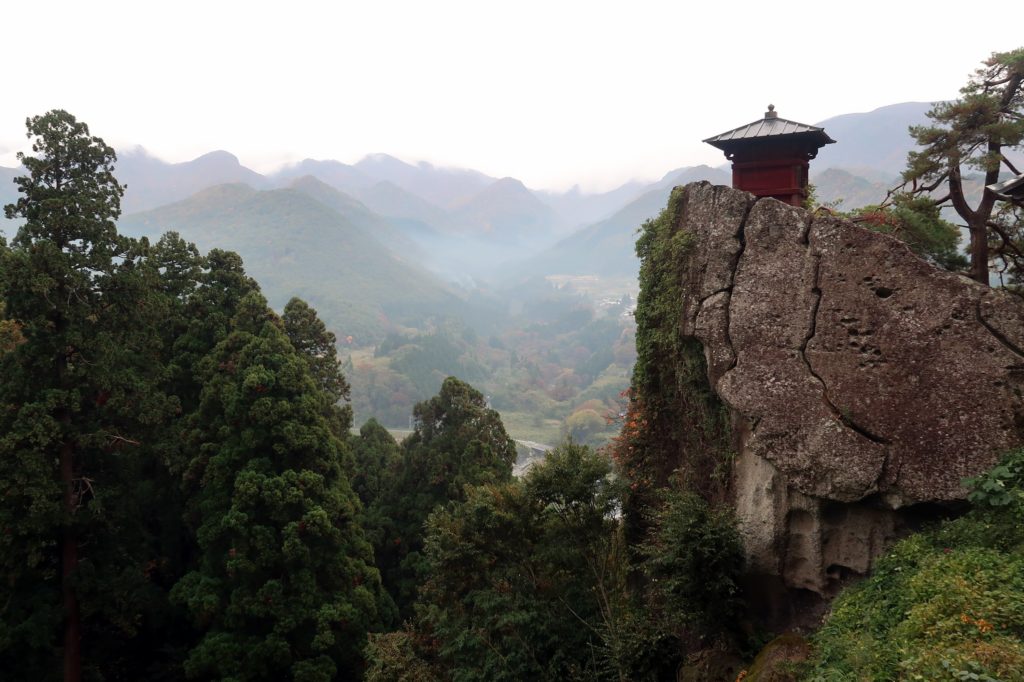
The museum stands at the foot of Yamadera, one of Tohoku’s most sacred mountains and home to Risshakuji Temple, where souls of the dead are thought to gather. Strung along craggy cliffs reached by more than 1,000 stone steps, the temple buildings are impressive from afar and afford expansive views of the surrounding countryside. As Basho wrote in Oku no Hosomichi, “It is a mountain of rocks piled on rocks, very old white pines, velvety moss on aged stones….The banks of the twisting path, crawling over stones, then worshipping at the Buddhist pavilions, such a beautiful, lonely scene–I felt my heart becoming clear and tranquil.”
But the haiku he wrote about Yamadera is simply: “This complete stillness/sinking into the rocks/voice of cicadas.”
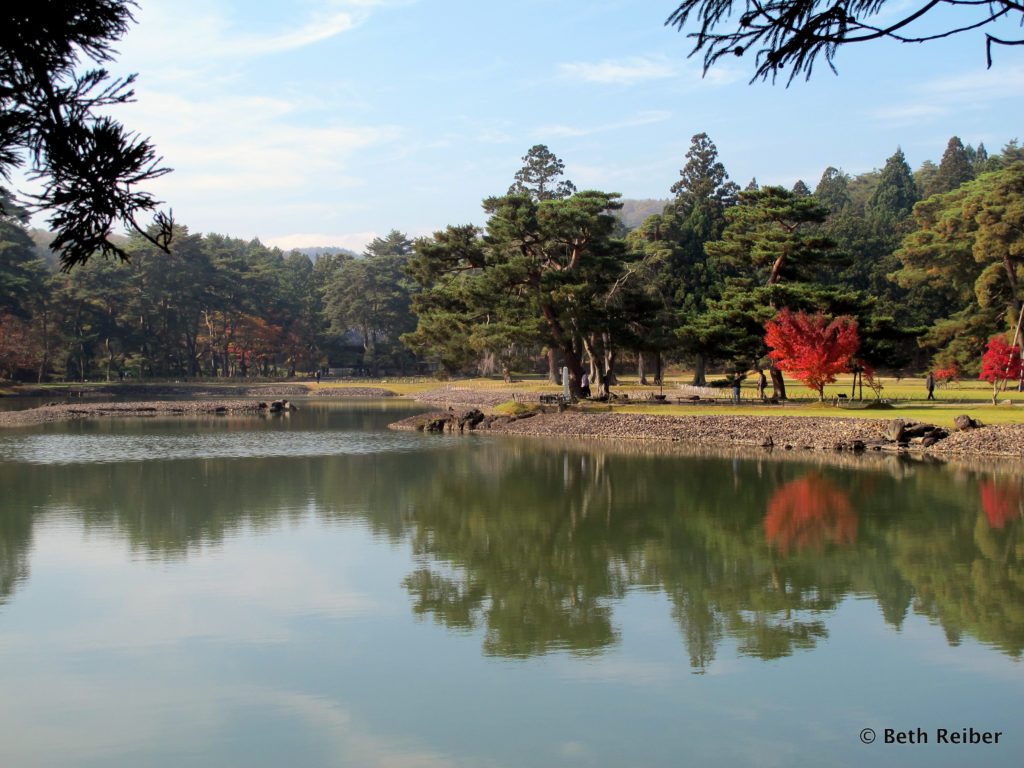
Basho also visited Hiraizumi, where Fujiwara no Kiyohira, his son and grandson created a 12th-century Buddhist utopia on earth that was once home to hundreds of monks but sadly lasted only 100 years. Today, the striking Golden Hall, some reconstructed temple buildings, and the Pure Land Garden are all that remain of the Fujiwara legacy. This is one of my favorite Basho poems: “Dried summer grasses/are all that mark the place of/noble warriors’ dream.”
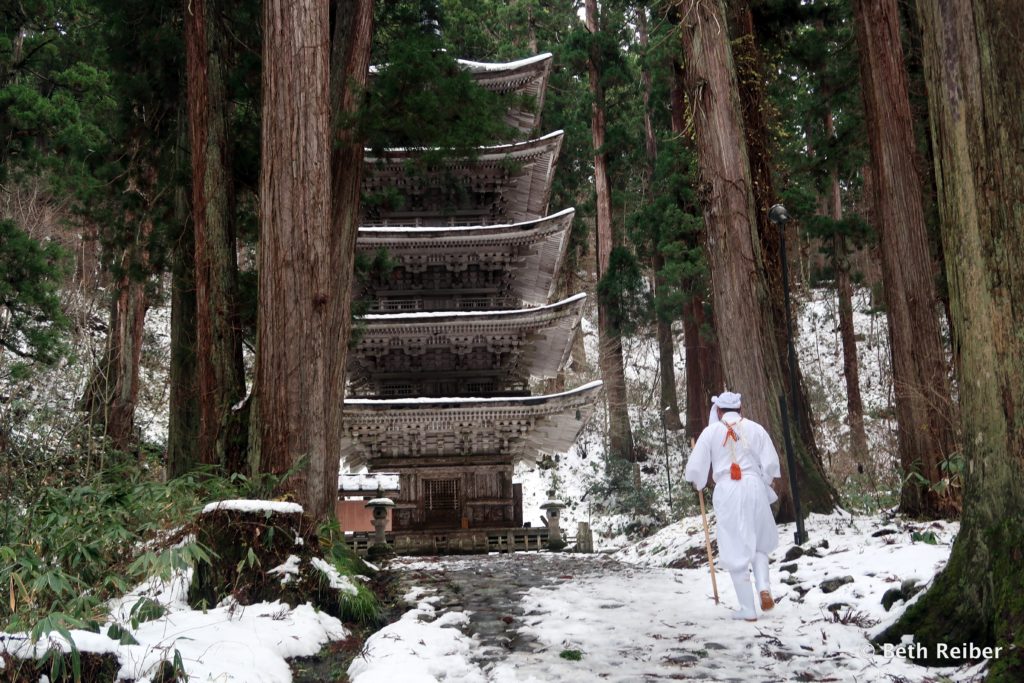
The Three Sacred Mountains of Dewa has long been one of Tohoku’s top spiritual draws, with a trek up all three said to represent a journey from death to rebirth. About Mt. Gassan, said to represent the past, Basho wrote: “How many cloud peaks/have come tumbling down upon/this mountain of the moon.” For Yudonosan, which represents the future, Basho had only this to say, “I cannot tell of/Mt. Yudono but you see/how soaked is my sleeve.” Mt. Haguro, which embodies the present and where the deities of all three peaks are enshrined, elicited this from Basho’s pen: “Such lovely coolness/palely the crescent moon gleams/on Mount Haguro.”
For more information about the places described here, see my articles: Finding Temples, Hot Springs and Snow Monsters in Quiet Northern Japan, published on frommers.com about Yamagata Prefecture, and A Pure Land Inspired by Treachery, about Hiraizumi at BBC.com/travel.com.
An ardent follower of Zen Buddhism, Basho undertook other journeys during his life, writing travel diaries with titles that make you want to read them. Journal of a Weather-Exposed Skeleton. Records of a Travel-Worn Satchel. In his later years, he was a virtual hermit, living in a hut on the outskirts of Edo (now Tokyo). His travels and simple lifestyle reflect the Buddhist desire to escape the material world in search of enlightenment.
The Deep North was his last journey, and shortly after completing Oku no Hosomichi, Basho died at the age of 51 (his work was printed posthumously, in 1702). He composed his last haiku on his sickbed: “On a journey ailing/my dreams roam about/on a withered moor.” A traveling poet til the end.
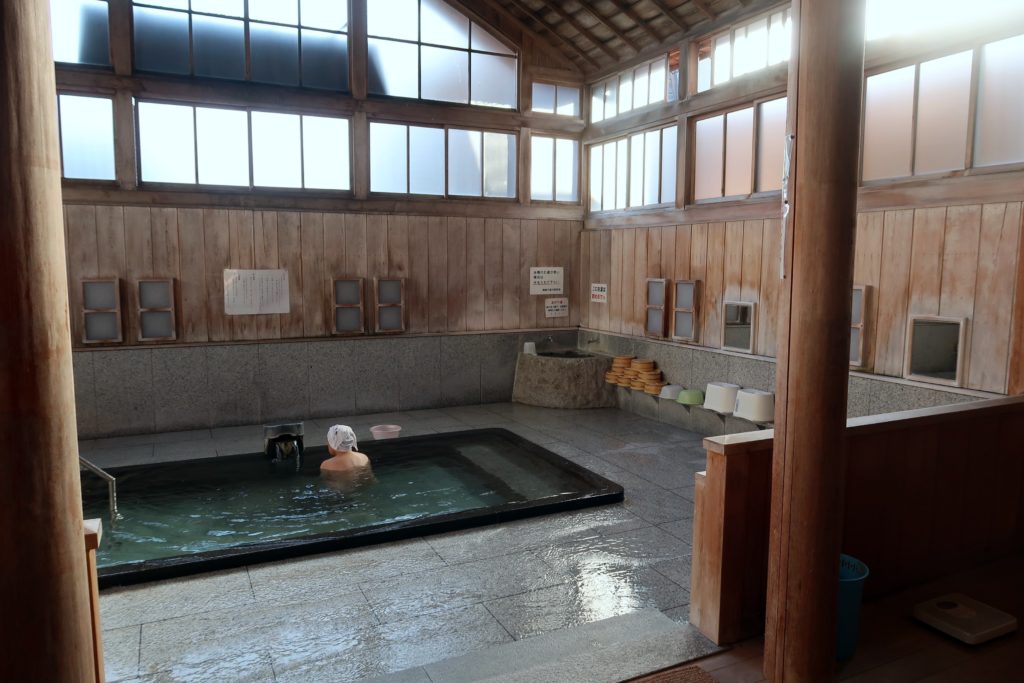
For more on Tohoku, Japan’s deep north, see my articles: Fukushima Prefecture: Go for the Sake, Stay for the Hot Springs and Samurai History; Fukushima’s comeback: This Japanese destination is ready for tourists again; Kamaishi–The Comeback Rugby Town 7 Years after the Tsunami, Wacky Wanko Soba and other Culinary Oddities of Japan’s Iwate Prefecture, and Japan’s Iwate Prefecture: Wild, White, and Wonderful.
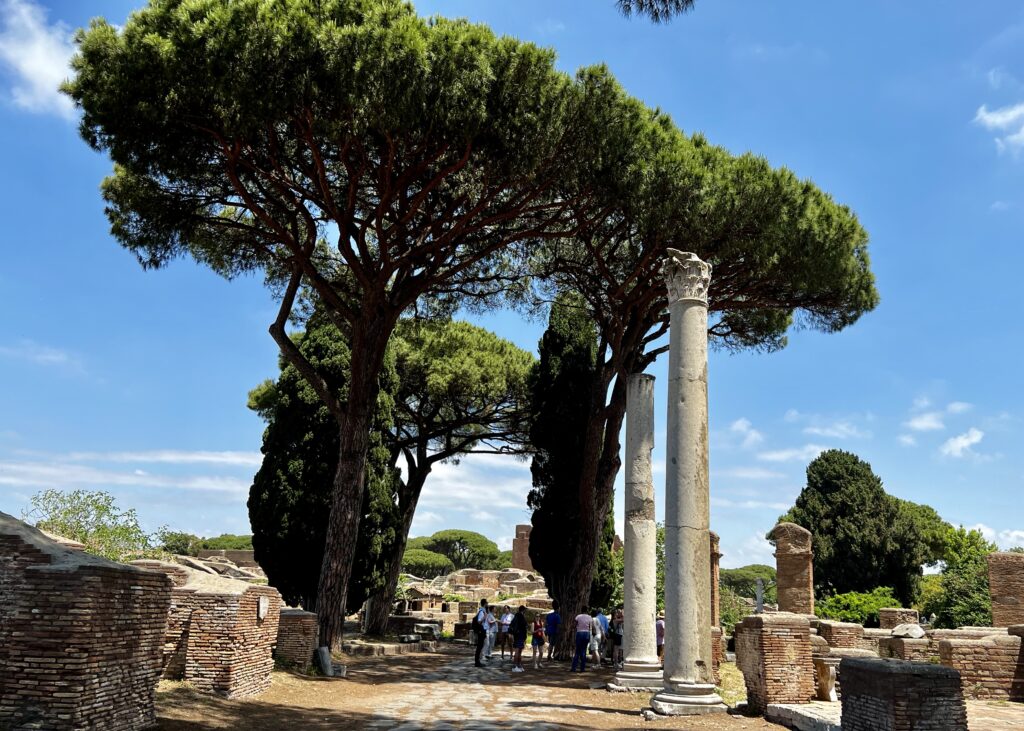
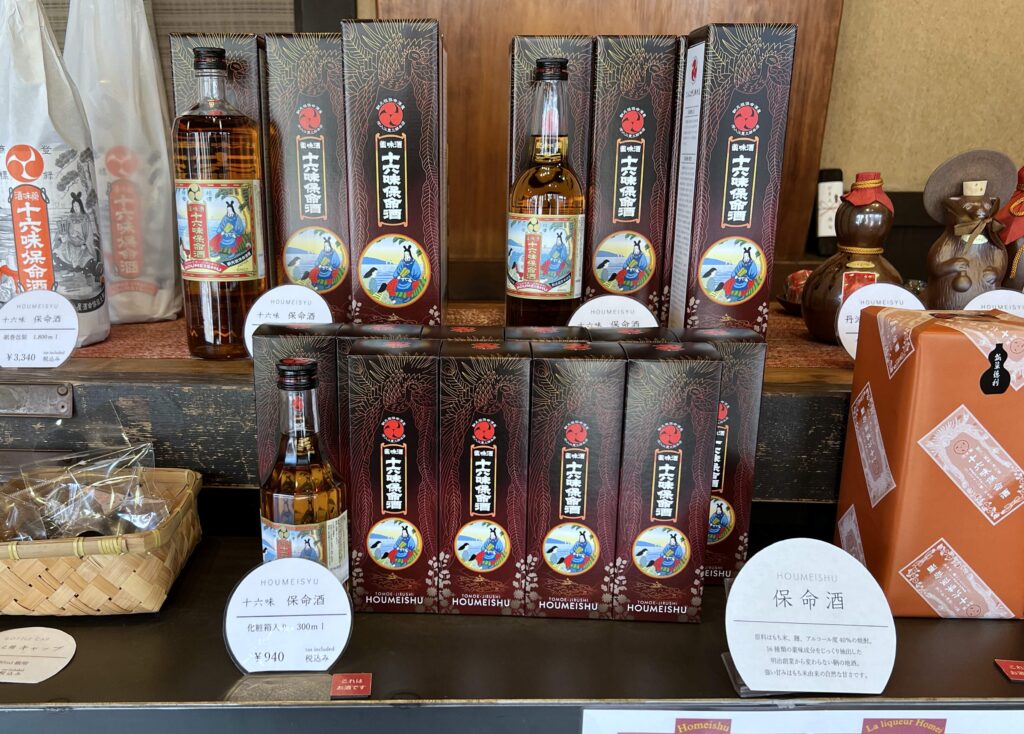
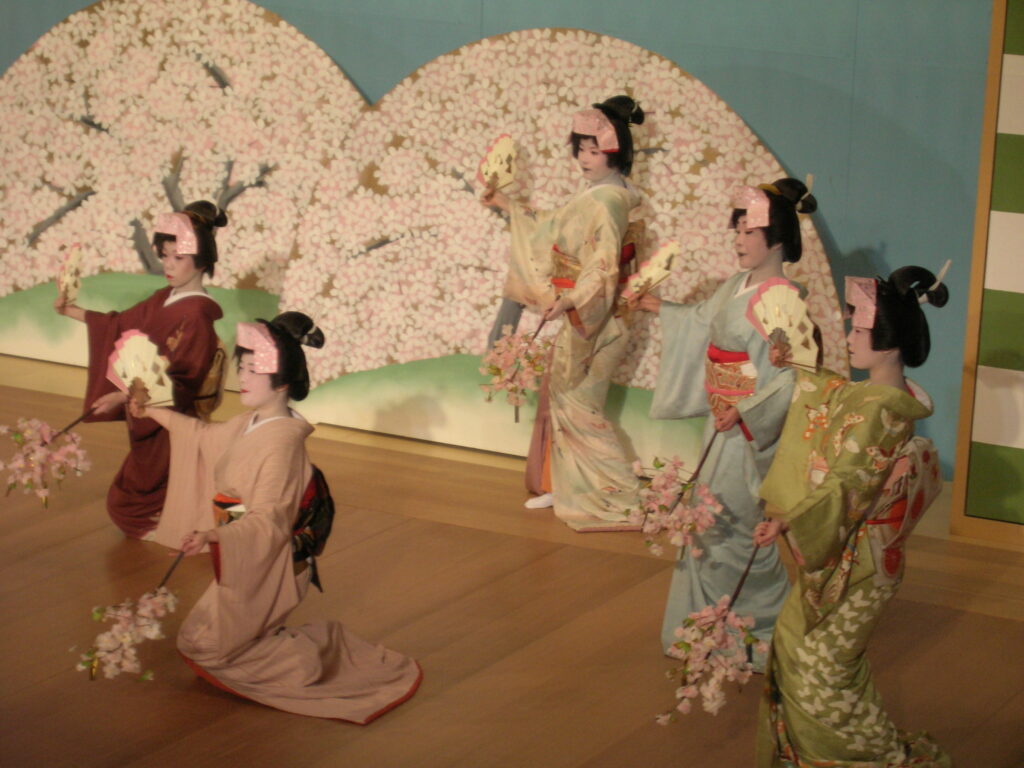
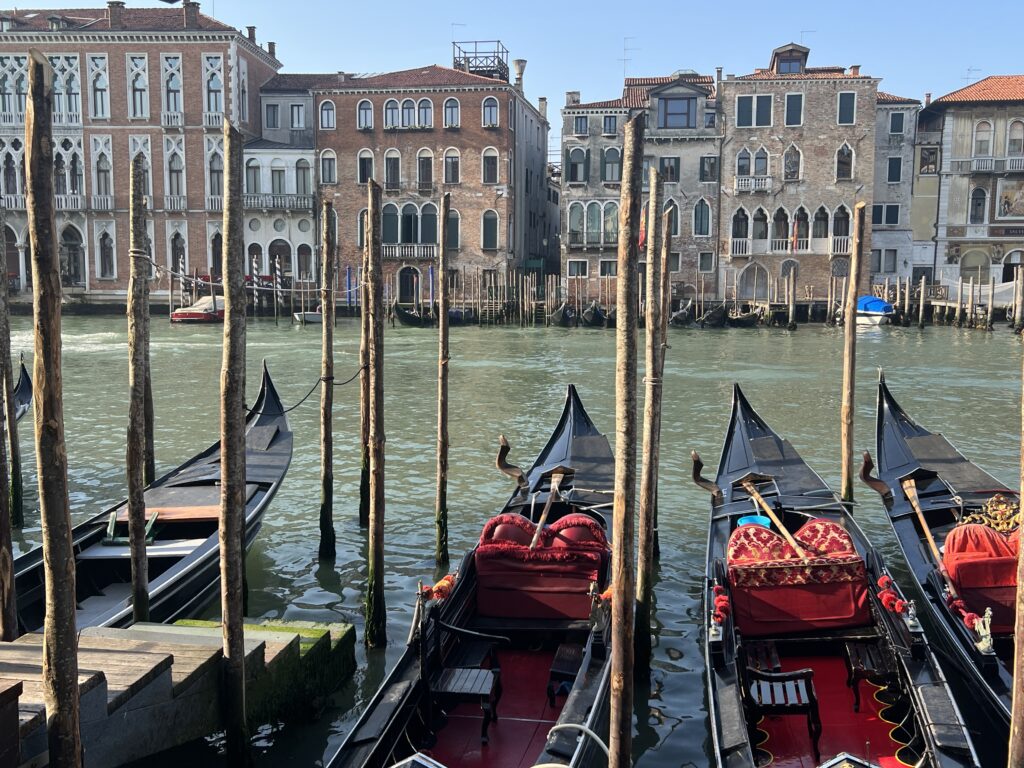
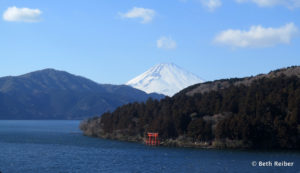
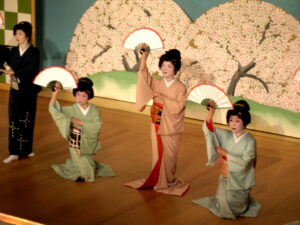
Hello, I have a copy of a thin booklet titled: “Yamagata and Basho’s Travel Diary” — but unfortunately the pages are all glued together and I cannot read it. Does anyone have an idea of how I can locate a new copy of this booklet?
It may have been published by Yamagata City. I tried to check their website w/o success. I also inquired of Powell’s bookstore w/o success.
Thank you!
Mark S.
Hello Mark, you have probably looked online for a new copy but to no avail. The problem with obtaining information about and from Yamagata’s website is the lack of English. Even the excellent Yamadera Basho Memorial Museum, which has displays and information in English, does not have English on its website. The museum does, however, have volunteers who speak English and provide tours. I don’t have an email for the museum, but the address is: Yamadera Basho Memorial Museum, 4223 Aza Nan-in, Oaza Yamadera, Yamagata-shi 999-3301, Yamagata Prefecture, Japan. The telephone number is (023) 695-2221. Because there are Basho scholars at the museum and a research library, perhaps someone there can help. Good luck!